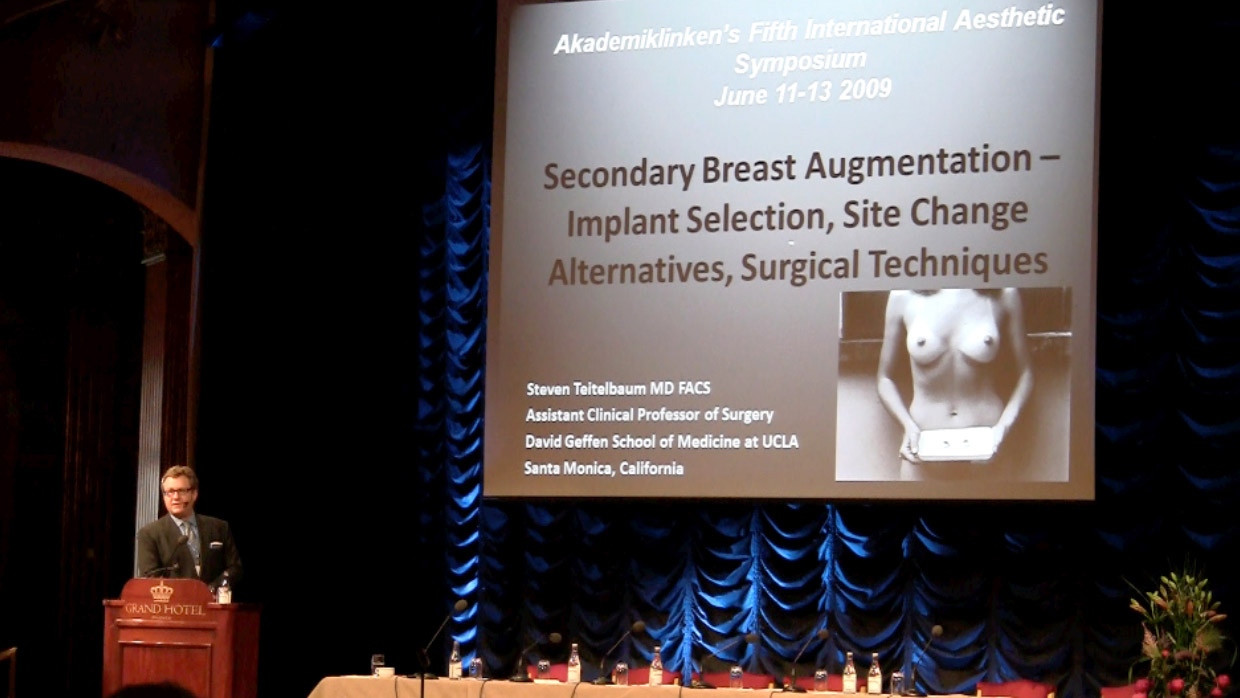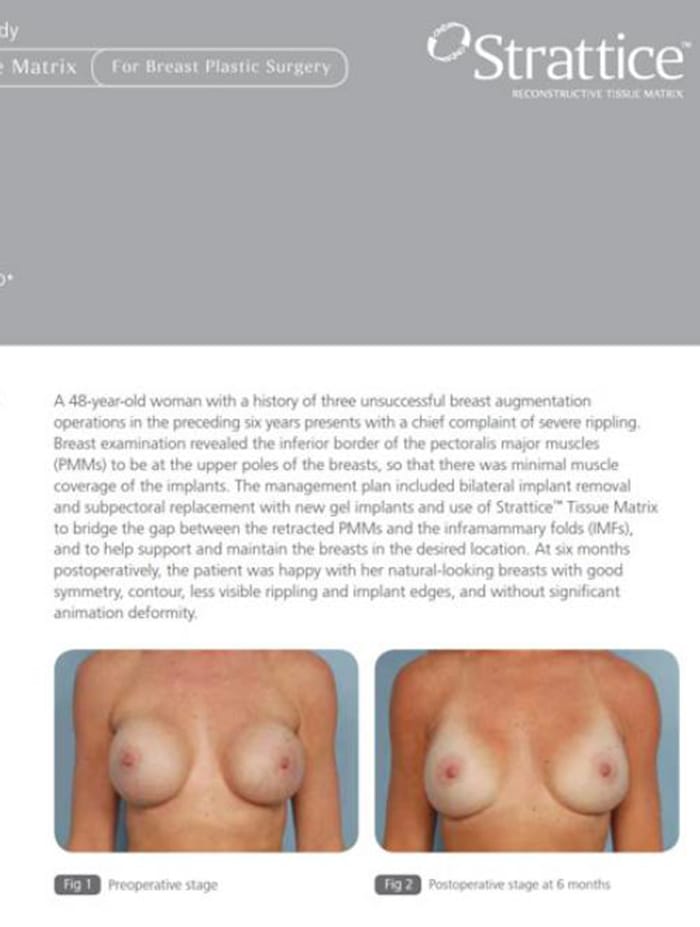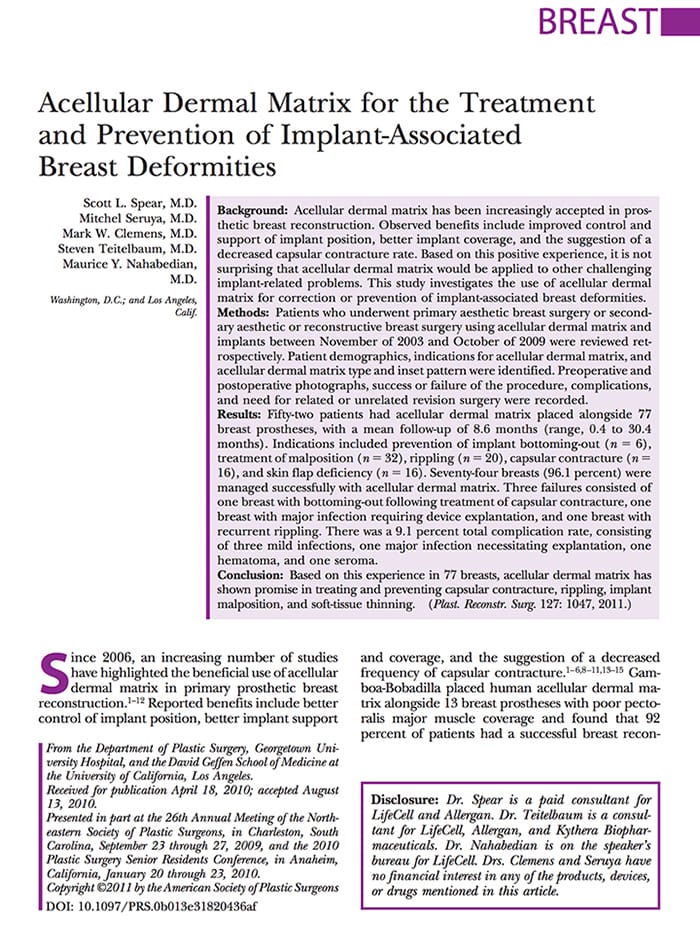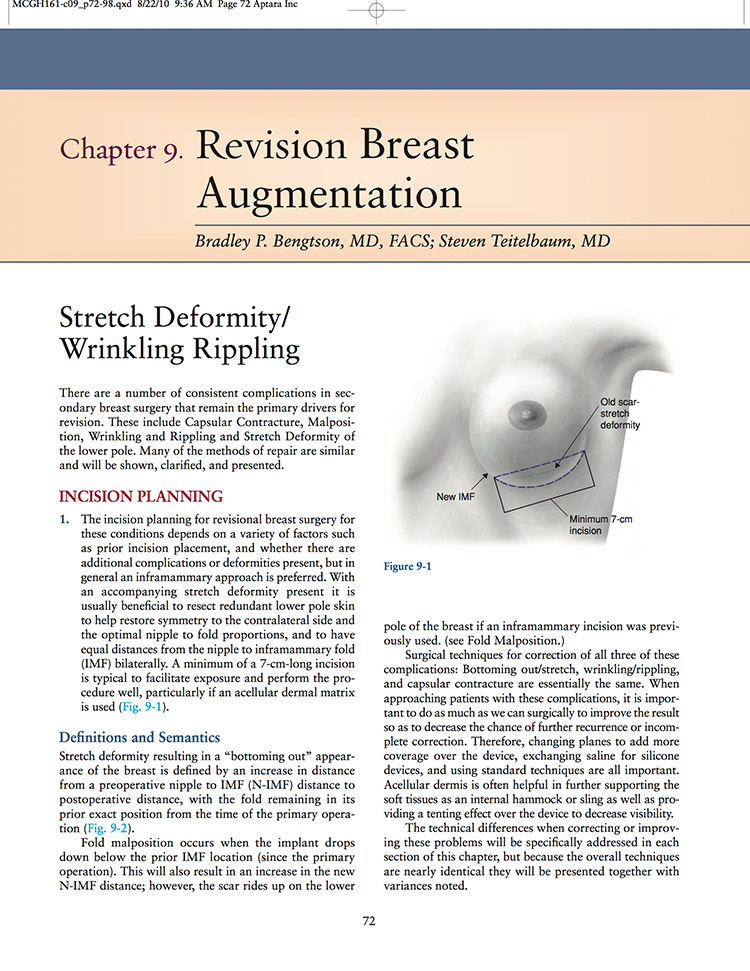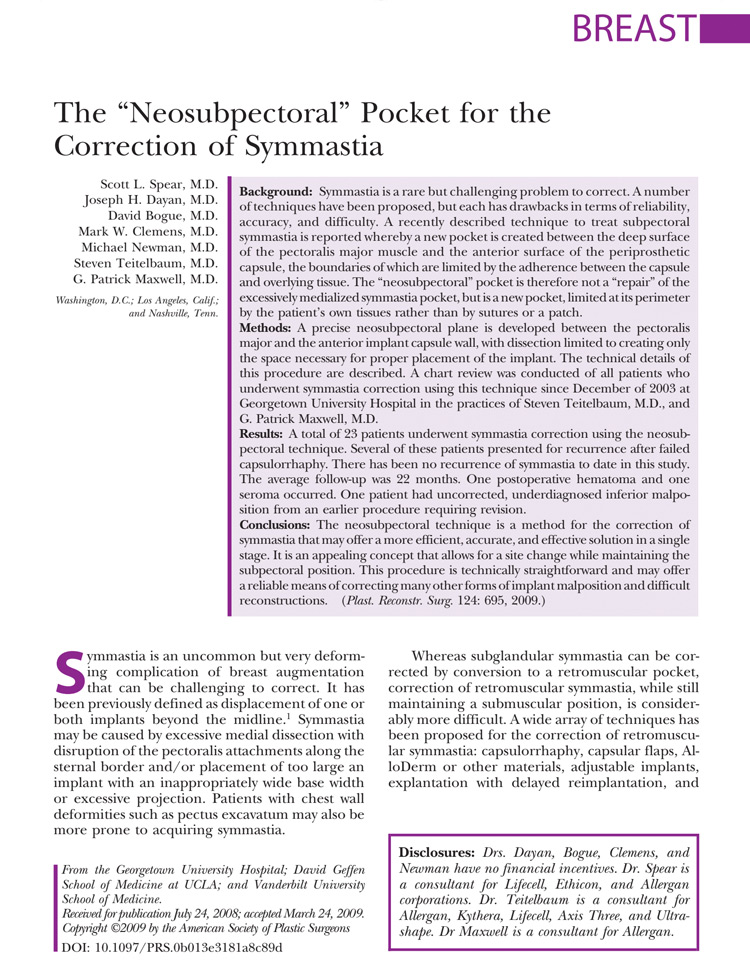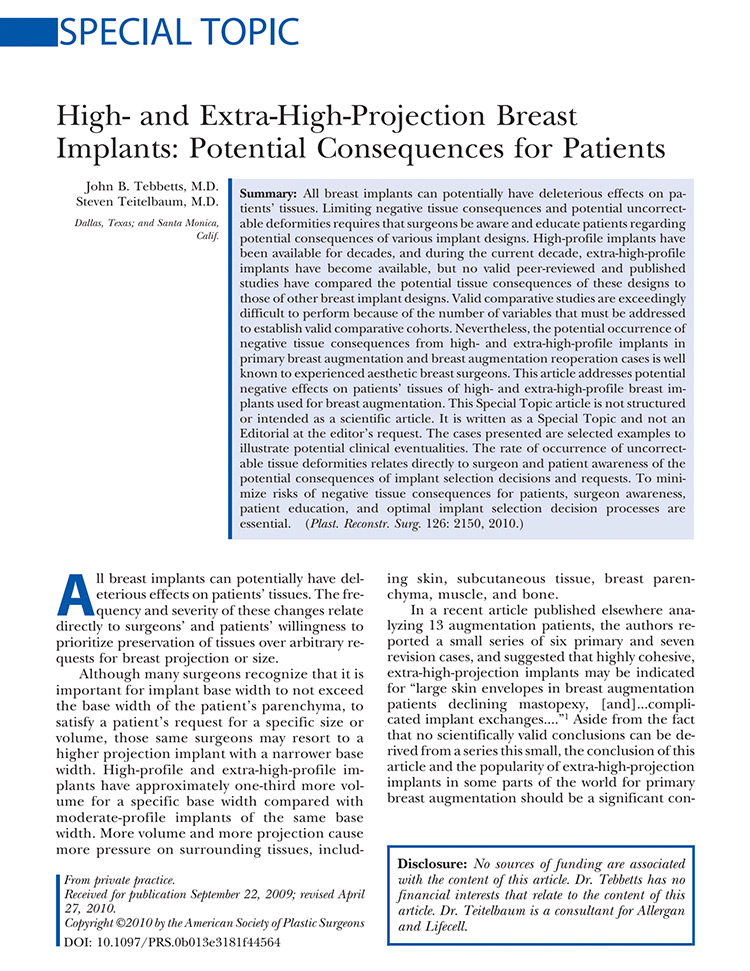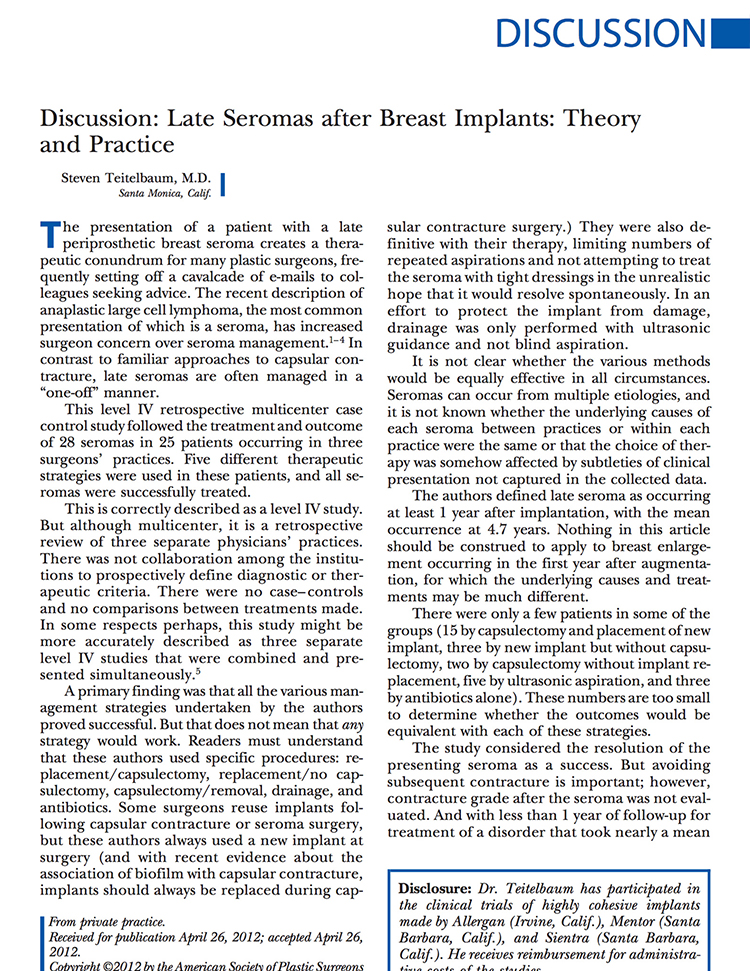In this guide for surgeons Dr. Teitelbaum describes the powerful techniques he helped develop for using ADM’s in difficult breast augmentation revisions.
Dr. Teitelbaum was a co-author on one of the first papers discussing the use of ADM’s for revisions of breast augmentations.

